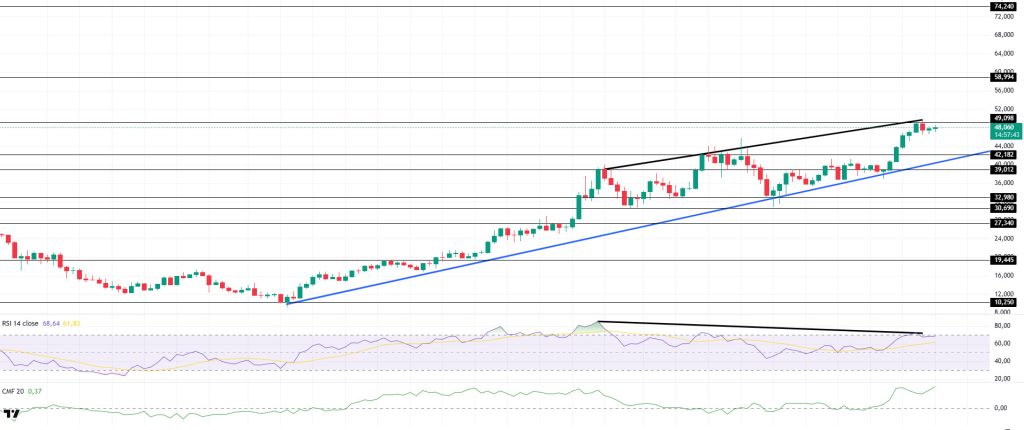What is Hyperliquid?
Launched in 2023 by Harvard classmates Jeff Yan and Iliensinc, Hyperliquid is one of the few major crypto projects launched without external funding. Hyperliquid has emerged as one of the most important decentralized infrastructures in recent times. Designed as a purpose-built Tier 1 for high-performance continuous trading, Hyperliquid combines the best aspects of centralized exchanges and decentralization, namely speed and self-custody. By mid-2025, its ecosystem had reached over 2 million active wallets, processed over $1.57 trillion in continuous volume, and powered over 100 dApps across trading, DeFi, and liquidity tools. Hyperliquid is one of the newest arrivals on the scene, but its rapid rise in 2025 says a lot about the growing demand for sophisticated crypto-native financial products. Unlike many of its predecessors, Hyperliquid is specifically designed to serve the burgeoning decentralized derivatives market, offering traders fast, secure and highly liquid access to perpetual contracts and other advanced trading tools.
How does it work?
The protocol’s technological architecture, based on a proprietary Layer-1 chain and HyperBFT consensus mechanism, allows for ultra-fast transaction finality and can process up to 100,000 orders per second. This architecture offers the same level of performance as a centralized exchange while maintaining decentralized, non-custodial features. What sets Hyperliquid apart from traditional centralized exchanges and even decentralized finance protocols is its hybrid model. It combines the performance of centralized order books with the trusted nature of blockchain consensus, creating a trading environment that is both user-friendly and censorship-resistant. With a strong emphasis on latency reduction, liquidity aggregation and synthetic asset creation, Hyperliquid appeals to professional traders, quant funds and algorithmic bots looking for an edge in execution. It also offers an intuitive interface and on-chain consensus for everyday crypto enthusiasts. Governance is handled through the HL token, which gives users a say in platform upgrades, trading fee models and new asset listings. The protocol has gained traction through aggressive recruitment of market makers and partnerships with major blockchain ecosystems, allowing it to seamlessly integrate with Ethereum, Arbitrum, Solana and more.
Taking the Top Spot on Defi
Grayscale’s decision to include HYPE in the list of assets under consideration in Q3 2025 further fueled optimism. This decision signaled that institutional investors recognize the token’s growth potential. This could attract more attention, increasing HYPE’s legitimacy and future adoption prospects. Hyperliquid’s recent integration with the Phantom wallet has further expanded its reach. Moreover, the DeFi protocol has also taken a leading position in the continuous trading market, capturing 60% of the market share. So, all these factors paint a bullish picture for the HYPE token. Last year, the platform had a perpetual futures trading volume of $1.57 trillion, which brought in a total revenue of around $310 million. In June alone, $208 billion in trading volume and about $56 million in revenue showed that the protocol can make a lot of money.
Hyperliquid is successful because it focuses on “Real Return” – income from real economic activity rather than issuing inflationary tokens. The platform’s sustainable revenue strategy, based on transaction fees and a new tiered fee structure, has attracted good traders and liquidity providers. HYPE has increased by over 300% since April thanks to the increased use of the Hyperliquid exchange and growing investor interest. Hyperliquid currently leads the decentralized perpetual trading market, processing over 70% of DEX perp volume. 97% of protocol fee revenue is reinvested in HYPE buybacks, aligning token incentives with platform growth. Meanwhile, the layer-1 blockchain it supports has quietly become one of DeFi’s biggest players. Hyperliquid currently ranks eighth among all blockchains with a locked value (TVL) of $1.75 billion, according to DefiLlama. Most recently, Nasdaq-listed Lion Group recently announced that it will hold $600 million in reserves with HYPE as its primary treasury asset. All these developments put Hyperliquid on top in the Defi space.
Strategic Partnership with Phantom Wallet Expands Reach:
The new “Phantom Perps” feature added Hyperliquid’s trading engine to Phantom Wallet, a major step forward. This deal gives Phantom’s 10 million monthly active users access to leveraged trading. It will start in the European Union and then expand to other parts of the world. The connection allows users to trade on more than 100 digital asset markets with up to 40x leverage while keeping their assets safe. Hyperliquid is making this strategic move in preparation for its “Hypercore” infrastructure upgrade, which will take place later this week. This upgrade will make the platform even better at what it does as competition in decentralized derivatives heats up.
What Makes Hyperliquid Special?
The goal is to offer the self-custody and transparency of a decentralized exchange while replicating the speed and convenience typically found on centralized platforms. In practice, DEX offers a seamless experience with features such as one-click trading, direct deposits from over 30 chains, and access to spot, margin and continuous markets. In particular, it avoids the complexity of bridging assets by offering perpetual contracts linked to token prices rather than the tokens themselves. A design that favors efficiency but limits composability and cross-chain interoperability. It also relies heavily on the accuracy of price oracles and funding rate mechanisms. This DEX is built on the Hyperliquid blockchain, a specialized layer 1 using a variant of the Byzantine fault tolerance (BFT) consensus called HyperBFT. The protocol relies on fast, high-volume communication between nodes and claims to support up to 200,000 transactions per second. But this transaction volume comes at a price. And that is decentralization. The network currently operates with just 21 authorized validators, in stark contrast to Ethereum’s 14,200 execution layer nodes.
DEX continuous order book:
The fully on-chain continuous order book exchange is a core feature of the platform. Unlike decentralized exchanges (DEXs) that rely on automated market makers (AMMs), Hyperliquid adopts a traditional order book system. This approach allows traders to bid and ask for various assets, similar to the experience of centralized exchanges (CEXs).
Margining system:
Hyperliquid has a decentralized clearinghouse that manages users’ margin balances and positions. The exchange supports both cross margin and isolated margin trading. Cross margin allows traders to spread margin across multiple positions, while isolated margin reduces the liquidation risks of other assets by reserving margin specific to each trade. This system improves traders’ flexibility and risk management.
Pricing mechanism:
Hyperliquid uses a decentralized oracle system to maintain accurate pricing, and validators update spot prices from major exchanges every three seconds, ensuring price integrity and reducing manipulation risks.
Order types and options available on Hyperliquid:
Hyperliquid L1 maintains an order book for each asset. The order book integrates with the clearing house, which performs all positions and margin checks. These checks take place when a new order is placed and again for the remaining side upon order matching. This process ensures a consistent margin system even in the midst of oracle price fluctuations.
Hyperliquidity Provider (HLP):
HLP is a protocol vault involved in market creation and liquidation processes by earning a portion of trading fees. It democratizes strategies usually reserved for institutional investors, allowing the community to contribute liquidity and share profit and loss (PNL). HLP does not have additional profit sharing for vault owners as it is fully owned by the community. The deposit locking period for HLP is four days.
What is Hype Token?
The HYPE token is the native cryptocurrency of the Hyperliquid blockchain and serves as the backbone of its ecosystem. It plays an important role in enabling governance, staking, and advanced transactions within HyperEVM. HYPE integrates utility, decentralization and community-driven incentives. HYPE holders actively shape the network by voting for meaningful upgrades and changes, enabling decentralized decision-making. The token also supports staking, allowing users to secure the network while earning rewards.
While most Hyperliquid transactions are gas-free, HYPE is required for advanced operations such as smart contract interactions and powering decentralized applications (DApps).
Features:
Transaction fees are calculated based on your 14-day trading volume, starting with volume tracked as of February 26, 2015. All sub-account volume contributes to the total of the main account and all accounts share the same fee tier. Vault volume is calculated separately. Referral rebates and rewards are only available for your first $25 million in trading volume. Maker rebates are automatically paid per trade and sent directly to your trading wallet. Users can claim referral rewards on the Referrals page. Unlike many other protocols where fees primarily benefit the team or insiders, Hyperliquid directs all fees to the community, specifically the HLP and the relief fund. For security, the relief fund primarily holds HYPE, the most liquid native asset on Hyperliquid layer 1 (L1).
HYPE Tokenomics:
The HYPE token uses a deflationary strategy, unlike typical inflationary models that can dilute value. Approximately 26% of HYPE’s total supply is eliminated each year through an incineration mechanism. This significant reduction in available tokens is designed to increase scarcity and therefore token value. Over time, this scarcity could positively impact price dynamics, providing token holders with a stable and potentially lucrative economic environment.
Future emissions and community rewards: 38,888
Genesis distribution 31,0
Core contributors: 23,8
Hyper foundation budget: 6.0
Community grants 0.3%
HIP-2 allocation: 0.012
Genesis Distribution distributed 31% of the supply to early adopters over the air, rewarding their support and building loyalty. The 38,888 allocation of community rewards incentivizes continued participation and network expansion. Allocations for Core Participants and the Hyper Foundation Budget provide operational support, while Community Grants and the HIP-2 Allocation fund innovative proposals to move the ecosystem forward.
Price Analysis
Hyperliquid (HYPE) hit a new all-time high following a centralized exchange listing and Grayscale support. With strong catalysts such as the recent centralized exchange listing, Grayscale’s inclusion in the list of Q3 assets under consideration, and Hyperliquid’s expanding influence in the decentralized finance (DeFi) space, the outlook for the token looks quite promising.
HYPE had experienced a price correction after hitting a record high on June 16. The uptrend gained further momentum as HYPE experienced back-to-back surges, gaining 24.11% in the past week. At the time of writing, the altcoin is currently trading at $48.01, breaking its previous high. While the positive momentum is also related to the overall market, HYPE has a few additional factors supporting its price increase. The growth of the Hyperliquid platform has also contributed to HYPE’s growth. Earlier last week it was reported that Hyperliquid’s daily revenue has consistently exceeded that of Ethereum and Solana over the past three months. Hyperliquid’s expansion in the DEX environment and its growing user base could trigger the HYPE price to break above the $74.24 level.
Looking at the daily chart, it continues to be above the uptrend that started on June 7. This shows us that the asset is still in an uptrend. However, on June 21, the 50 EMA (Blue Line) accelerated from the moving average and the uptrend, turning the $32.98 level, which investors consider cheap, into support. This acceleration could be as high as $74.24. A downside break of the 50 EMA moving average and the uptrend could lead to declines. Candle closes below this level could push the pair down to $32.98 and then to $30.69. When we look at the Relative Strength Index (RSI – 14) indicator, we see a negative mismatch. This signals a potential price decline. At the same time, the Chaikin Money Flow (CMF-20) indicator is in positive territory and money flow is increasing. This could have a positive impact. As long as the price stays above the moving average and the uptrend, it could rise to $49.09 and then to $58.99. A break above $49.09 signals that the buyers have beaten the bears. On a reverse pullback, $27.34 levels would not be a surprise if the price closes candles below the 50 EMA moving average.
Supports 42.18 – 39.01 – 32.98
Resistances 49.09 – 58.99 – 74.24
Disclaimer
This content is for informational purposes only and does not constitute financial advice. Cryptocurrency investments are subject to high market risk, and past performance is not indicative of future results. Please do your own research (DYOR) and consult a financial advisor before making investment decisions.





